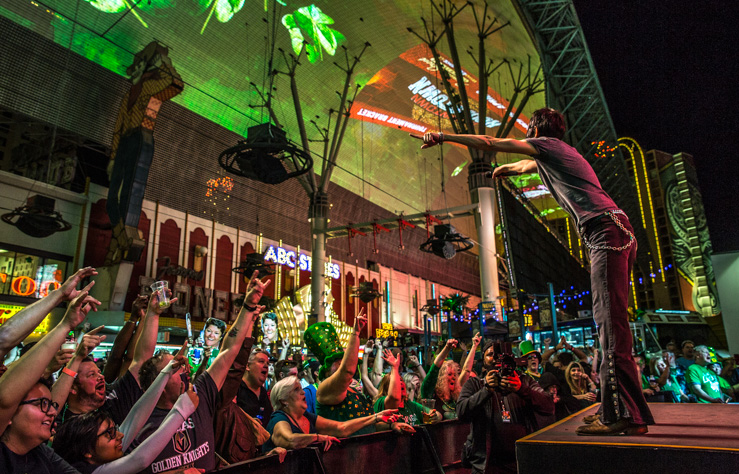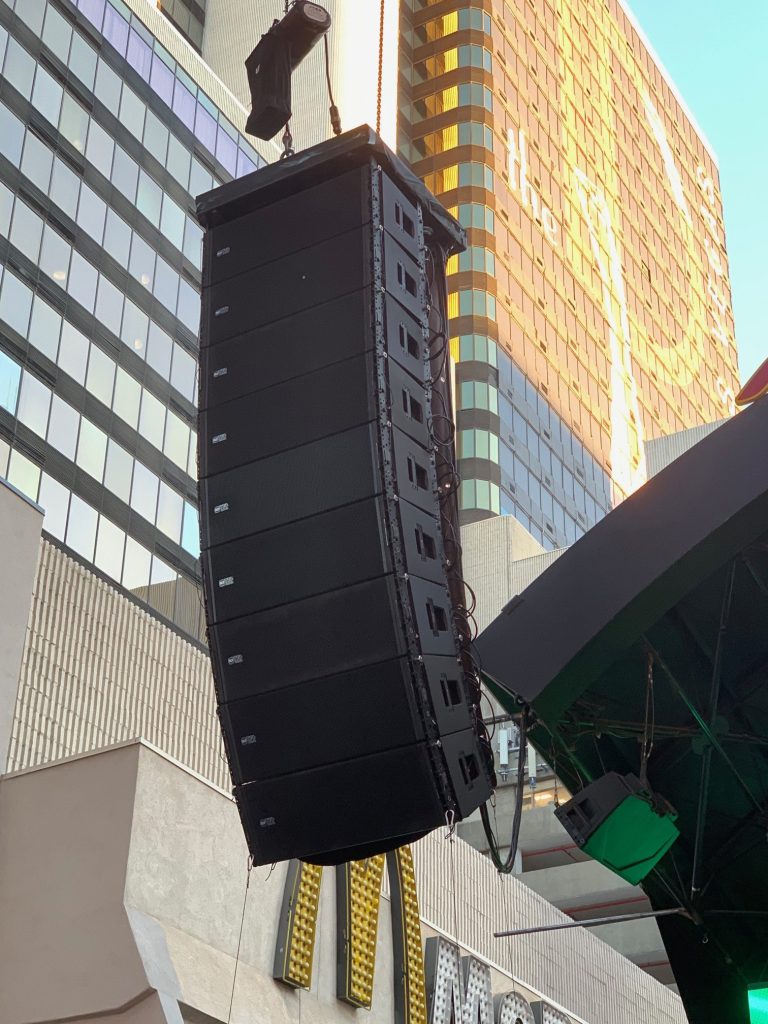For decades running, Las Vegas’ raison d’etre has been to make sure the show goes on, 24/7. Performance is a habit that runs deep here, but that doesn’t make the effort any less genuine, especially when consideration is given to Fremont Street, downtown’s main drag.
It’s here, under the Viva Vision canopy, where 12 million LED lamps combine with the street’s glittering neon signage to dazzle those below along four blocks that run from Fourth to Main Street. Enter this world, and you give yourself over to the Fremont Street Experience (FSE), an entertainment district with three live stages featuring a constantly revolving mix of acts ranging from national headliners to local talent. This is where the fun is, and if seeing is believing, you can be assured that you’ll hear everything with great clarity too.
On one level, the stages of FSE could be compared to those found at a nightclub, or a festival, or even a combination of the two. The largest distinguishing difference between FSE’s stages and virtually any others, however, is that they operate 365 days per year, through a better part of both day and night, offering a variety of popular music for free to crowds that assemble with the speed of a flash mob and numbers to match.

Neverending Process
If it seems as if you’ve read about audio upgrades at FSE before on these pages – and maybe not even that long ago – it’s likely you have, as the street is always refining its technology footprint. “We’re literally running around all the time here,” FSE production manager Joe Pizzo accurately notes, “even during those rare moments when there isn’t someone onstage. Our gear is out here in all kinds of weather, some of it quite extreme in terms of heat, and then there’s the dust, moisture, crush of the crowds, you name it.

“We rely upon quality components, but anything can only last so long in this environment. If there’s an upside to all this, it’s that we get to constantly refine our design to better serve our audience.”
Notable among the FSE audio system upgrades most recently completed was the 2016 addition of 50 new loudspeaker clusters from RCF. Flown at strategic points beneath the Viva Vision canopy, the clusters were assembled with RCF’s HDL 20-A full-range cabinets, as well as the company’s SUB 8005-AS subwoofers.
At the same time, an assortment of RCF line array enclosures including TTL 55-A and HDL 30-A components, subwoofers including TTS 56-A, SUB 8006-AS, and TTL 36-AS boxes, plus a group of TT 25-CXA wedges were also deployed at FSE’s three stages, which reside at Fremont Street’s intersection with First, Third, and Main Streets.
Fast-forward to 2018, and Pizzo found himself needing new consoles at all three stages. “It was just time,” he recalls. “They had all outlived their useful lives, so we looked at the situation as an opportunity, not a loss. I really wanted desks with more available faders, and all of my engineers – myself included – were getting tired of constantly having to jump between layers. There’s no spare time in any of our schedules; we have to add value to each and every movement we make.”
Along with Pizzo, a team of six system operators migrate between duties at the three individual FSE stages. Changeovers are lightning quick, with five minutes allotted between DJs and 15 given to complete band turnabouts. Out of necessity, the console replacements he was seeking had to accommodate this blistering pace, plus take little or no time to program, learn, and function as part of the team.















